The allure of rock gardens lies in their timeless beauty and ability to transform even the smallest space into a captivating landscape. Whether you’re a beginner just dipping your toes into the world of gardening or a seasoned green thumb looking to try something new, creating a rock garden is a rewarding endeavor that combines creativity with nature’s raw materials. These gardens not only bring an artistic element to your outdoor space but also offer a practical solution for areas with poor soil or challenging conditions.
In this article, we’ll guide you through seven quick and easy steps to design and construct your very own rock garden. You’ll discover how to choose the right rocks and plants, design layouts that flow harmoniously, and maintain your garden to keep it thriving. Whether you’re dreaming of a serene Zen-like corner or a vibrant alpine slope, our simple yet effective tips will help you achieve a stunning rock garden that suits your style and space. Embrace the challenge and let your garden become a personal canvas of natural beauty and tranquility.
Choosing the Perfect Rocks

When choosing rocks for your garden, consider both aesthetics and functionality. Opt for rocks that complement the natural landscape while also providing structure and drainage for your plants.
It’s essential to select rocks of varying sizes to create visual interest and contrast. Larger rocks can serve as focal points, while smaller stones or gravel can fill in gaps and support plant growth.
Flat stones are ideal for creating pathways or terraces that help with water runoff. For a more natural look, use irregularly shaped rocks to mimic a natural outcropping or ledge.
Beginners should start with locally sourced rocks, as they are likely to be more compatible with the regional climate and soil conditions. Advanced gardeners might experiment with imported stones, but must ensure they suit their garden’s specific microclimate and design.
Designing a Natural Layout
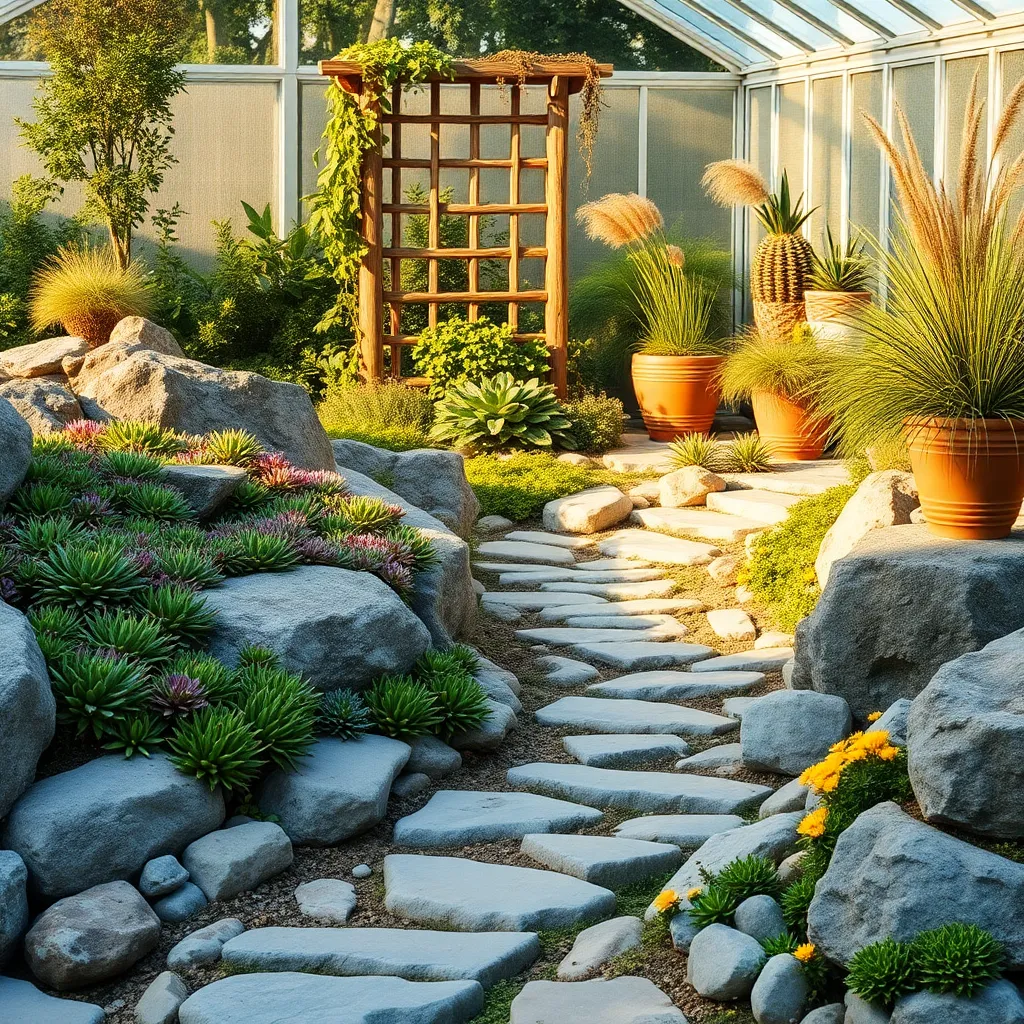
When designing a natural layout for your rock garden, consider the existing landscape as a guide. This approach will help your garden blend seamlessly into the surroundings, creating a cohesive and natural look.
Start by selecting plants that thrive in rocky environments, such as sedums and alpine species. These plants are not only low-maintenance but also add vibrant colors and textures to your garden.
Layering your plants is crucial to achieving a natural look. Place taller plants like ornamental grasses towards the back, allowing shorter ground covers to create a cascade effect towards the front.
To maintain a balanced ecosystem, ensure that your soil has excellent drainage, which is essential for most rock garden plants. You can achieve this by mixing sand or fine gravel into your soil to prevent waterlogging.
Incorporate varying sizes of rocks to mimic natural rock formations. Large boulders can act as focal points, while smaller stones can be used to form paths or borders, enhancing the garden’s structure.
Consider the microclimates within your garden, such as sunny spots and shaded areas. Choose plants that are suited to these specific conditions, ensuring they receive the appropriate amount of sunlight and water.
Preparing the Ground Surface
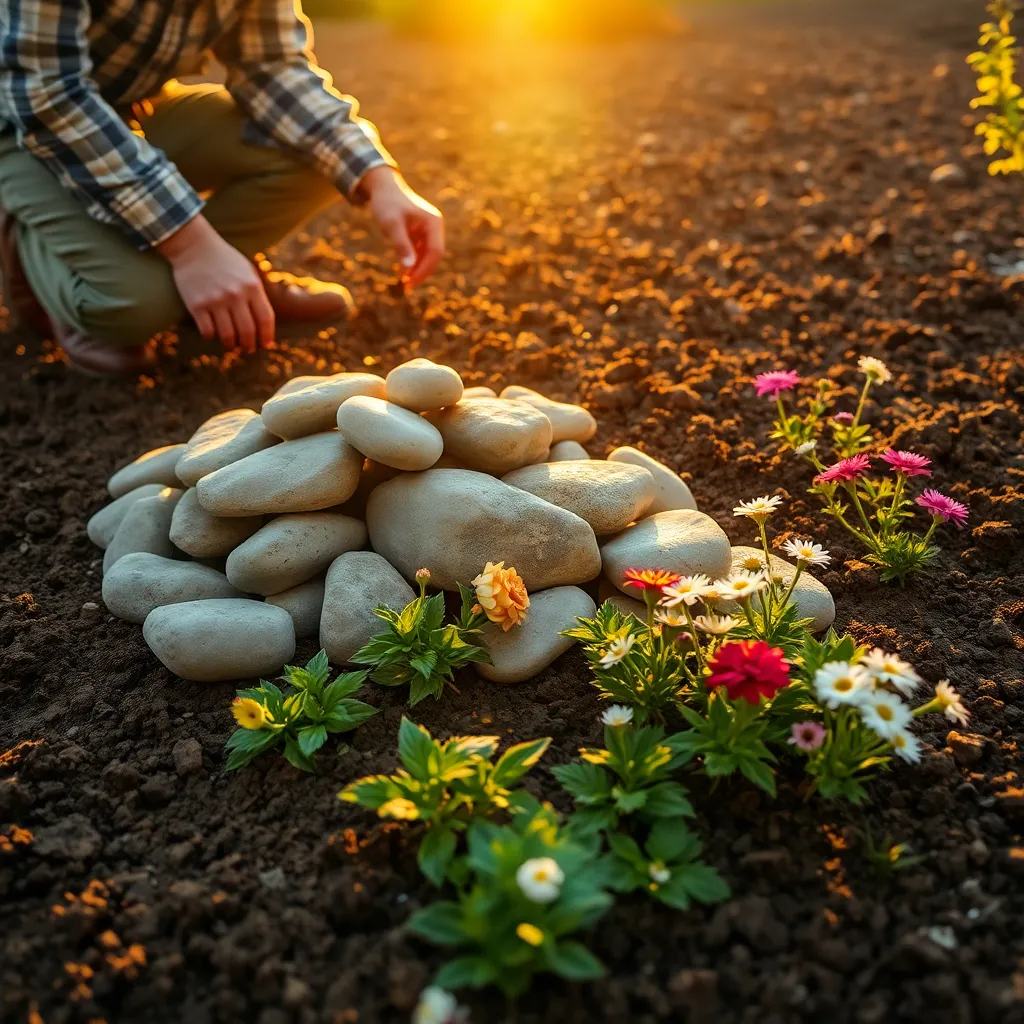
Preparing the ground surface for a rock garden is a crucial step that sets the foundation for a thriving landscape. Start by choosing a well-drained location to prevent waterlogging, which can harm rock garden plants.
Once you’ve selected the site, remove any existing vegetation, including weeds, to ensure that your plants have minimal competition for nutrients. A thorough weeding also prevents unwanted plants from creeping back into your carefully curated space.
After clearing the area, it’s essential to assess the soil composition. Most rock garden plants prefer a soil mix that is gritty and drains well, so consider amending your soil with sand or fine gravel to improve its structure.
For gardeners dealing with clay-heavy soil, creating a raised bed can enhance drainage significantly. This technique allows for better root development and prevents water from pooling around plant bases.
Once you’ve addressed the soil, consider incorporating a layer of landscape fabric to further suppress weeds. Cover this fabric with a layer of stones or gravel to blend seamlessly with the rock garden’s aesthetic while keeping maintenance minimal.
Selecting Suitable Rock Plants
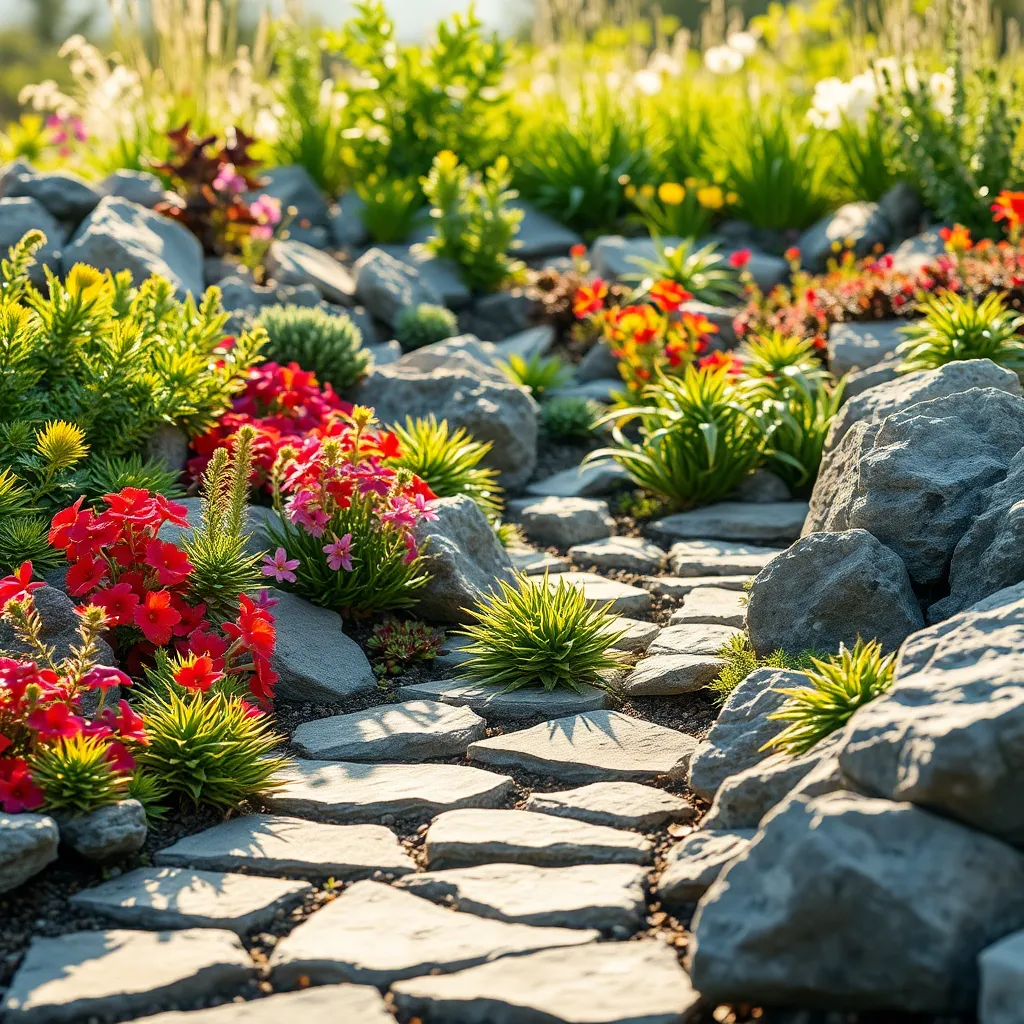
Once you’ve prepared the ground surface, selecting the right rock plants is crucial to ensure your rock garden thrives. Rock plants are typically hardy, drought-resistant, and can thrive in well-drained soil, making them ideal for rock gardens.
Consider starting with low-growing perennials like sedums and sempervivums, which are not only attractive but also incredibly resilient. These plants are perfect for beginners as they require little maintenance and can withstand periods of drought.
For more variety, incorporate some alpine plants like saxifrages or dwarf irises, which add vibrant color and texture. These plants often need a bit more attention, such as ensuring they receive ample sunlight and are protected from excessive moisture, especially in areas with heavy rainfall.
Advanced gardeners might explore incorporating herbaceous perennials like lavender or thyme, which add fragrance and a dynamic element to the garden. These plants prefer a sunny spot with well-draining soil and benefit from occasional trimming to maintain their shape and encourage healthy growth.
Arranging Rocks for Visual Impact

Arranging rocks in a rock garden is an art that combines aesthetics with practicality. Consider using a mix of different sizes and shapes to achieve a natural look that mimics nature’s own rock formations.
Start by selecting rocks that complement the color and texture of your chosen plants. Position larger rocks as focal points, ensuring they are partially buried to create a natural appearance.
Place smaller stones and gravel around larger rocks to mimic a natural landscape and provide excellent drainage. This arrangement not only enhances visual appeal but also creates microclimates that benefit your plants.
For a more advanced touch, use rocks to create terraces or levels within your garden. This technique can help with water management and can provide diverse growing conditions, allowing for a wider variety of plants to thrive.
Maintaining Your Rock Garden
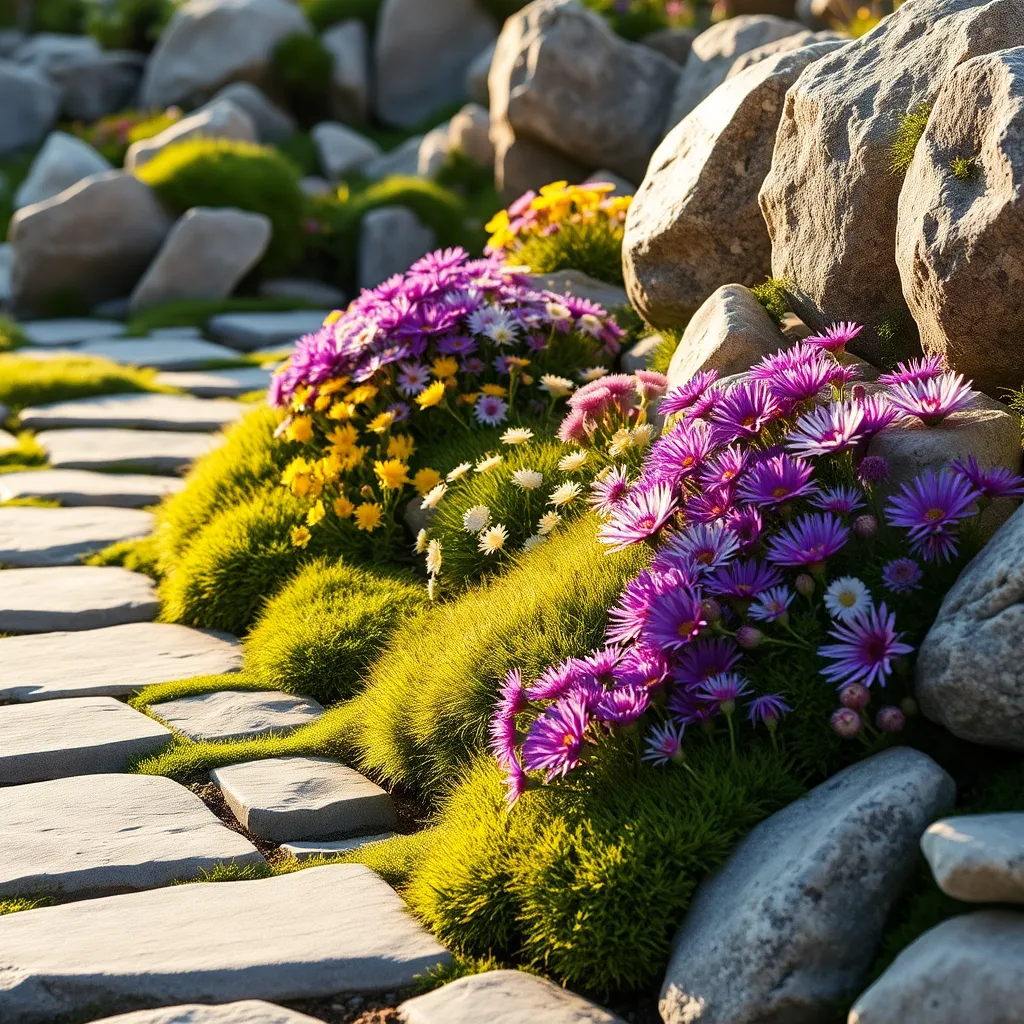
Once your rock garden is established, regular maintenance ensures its ongoing beauty. Begin by consistently removing weeds, as their presence can disrupt the aesthetic and compete with your plants for nutrients.
To keep your rock garden thriving, pay attention to the soil conditions. Rock gardens typically require well-draining soil, so consider adding a mix of sand and gravel to improve drainage if necessary.
Watering is crucial but must be done judiciously; overwatering can lead to root rot. Aim to water deeply but infrequently, allowing the soil to dry out between waterings, which encourages deep root growth.
Seasonal care is also vital in maintaining your rock garden. In the spring, apply a slow-release fertilizer to provide nutrients throughout the growing season, and in the fall, remove any dead leaves or debris to prevent pests and diseases.
Seasonal Care and Adjustments
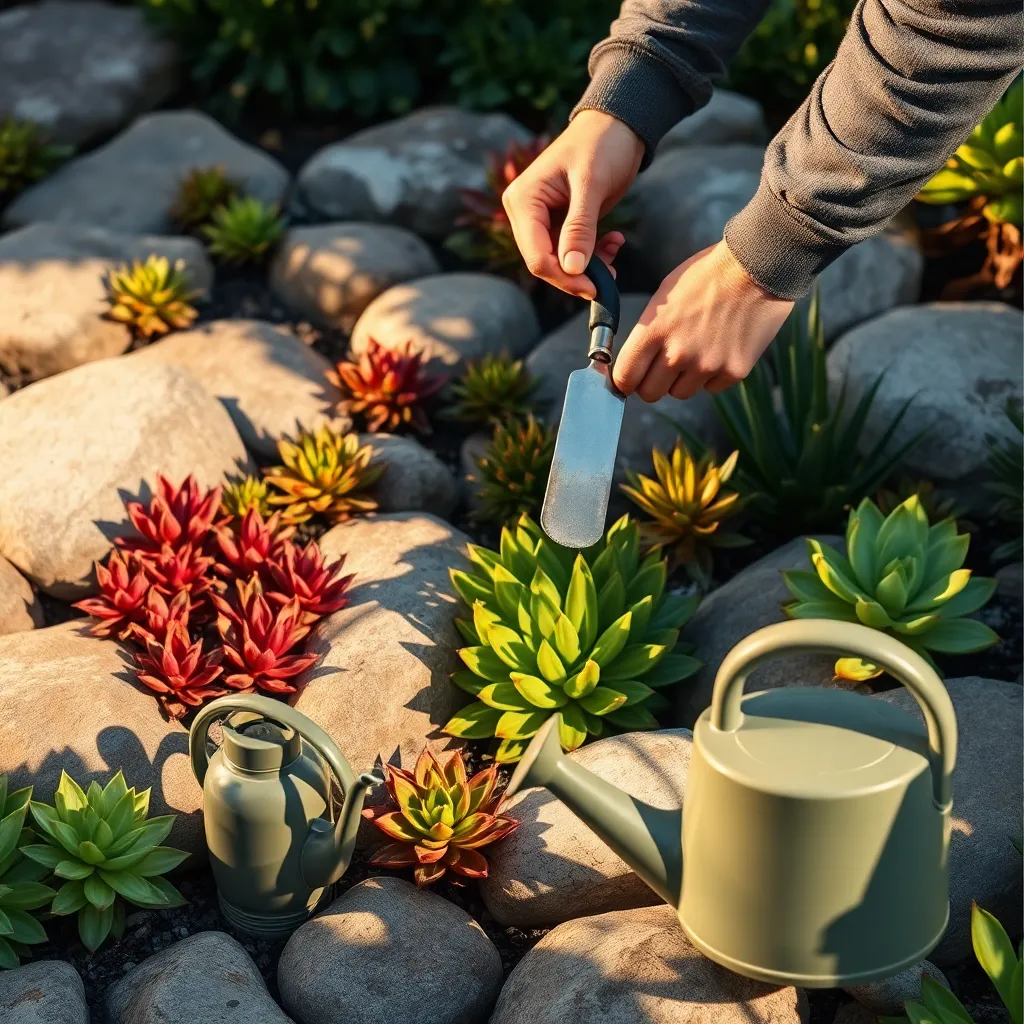
As seasons change, so do the needs of your rock garden plants, making adjustments essential for their health. In spring, ensure that your rock garden is clear of debris and fallen leaves, which can harbor pests and diseases.
During summer, rock gardens often require more frequent watering to combat the heat, especially if your rocks retain warmth. It is beneficial to water in the early morning or late afternoon to minimize evaporation and ensure plants receive adequate moisture.
In the fall, consider adding a layer of mulch around your plants to insulate the soil. This not only helps retain moisture but also protects plant roots from early frost, setting them up for a healthier spring growth.
Winter care involves checking that your rock garden drains well to prevent waterlogging, which can damage plant roots. If you’re in a region with heavy snowfall, gently brush snow off delicate plants to prevent breakage and ensure light reaches them.
For those with alpine plants, they may require specific attention such as grit or sand beneath their roots for improved drainage. This method mimics their natural mountainous environment, promoting robust growth.
Regularly assess your rock garden’s layout and plant placement to ensure optimal sunlight exposure and airflow. Adjusting plant positions or swapping in new varieties can refresh your garden’s appearance and improve plant health as seasons change.
Conclusion: Growing Success with These Plants
In summary, this article explored seven key concepts to enhance your relationship, akin to crafting a rock garden: laying a solid foundation of trust, nurturing growth through communication, embracing diversity with open-mindedness, fostering resilience by navigating challenges together, cultivating shared experiences for deeper connection, maintaining individual spaces to thrive independently, and continuously tending to the relationship’s needs with love and care.
As an immediate step, consider having an open discussion with your partner about one of these aspects you’d both like to focus on. This proactive approach can reignite or strengthen your bond, setting the stage for ongoing relationship success.
Remember, relationships, much like rock gardens, require ongoing attention and nurturing. Bookmark this article as a handy guide, ensuring you have these insights at your fingertips whenever you need a refresher. By doing so, you’re investing in the longevity and health of your partnership.
Looking ahead, envision a future where your relationship not only survives but thrives, built on the principles outlined here. With dedication and mutual effort, you’ll find yourselves walking hand in hand through a flourishing garden of love and understanding.







